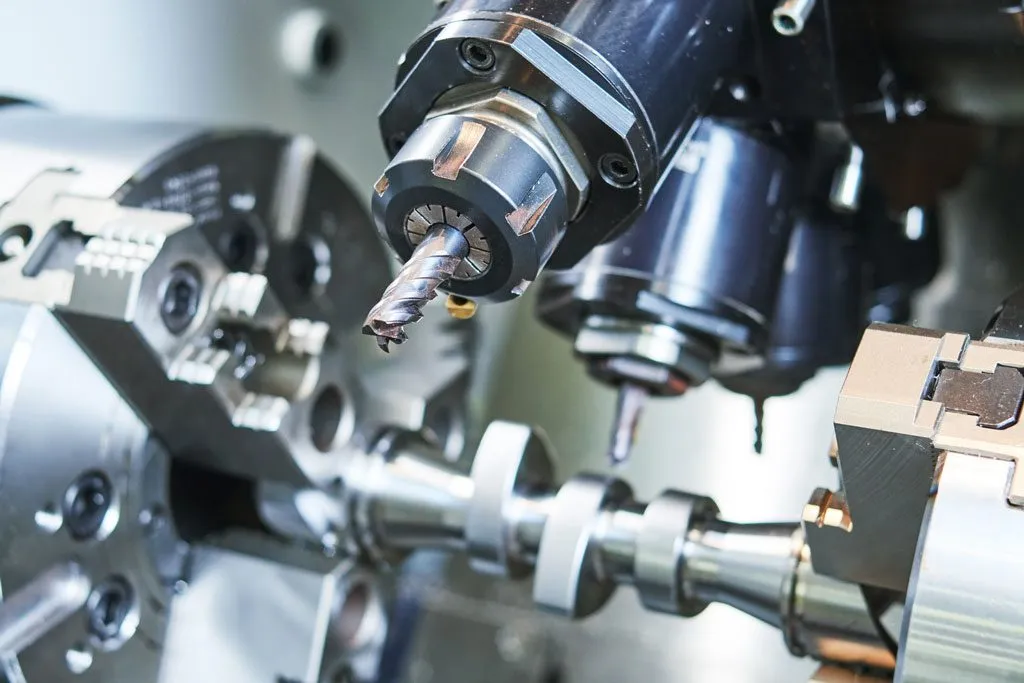The aerospace industry is one of the most demanding sectors in the world. From aircraft engines and landing gear to cockpit components and satellite systems, every part must meet extremely high standards of safety, precision, and reliability. Even the slightest defect can have catastrophic consequences.
In this environment, CNC (Computer Numerical Control) machining has become a core manufacturing method. Known for its accuracy, consistency, and ability to work with advanced materials, CNC machining ensures aerospace parts meet stringent regulatory and industry standards while enabling innovation and efficiency.
Why CNC Machining is Critical for Aerospace
1. Precision and Safety
Aircraft parts must maintain tolerances as tight as ±0.0001 inches to guarantee safe operation. CNC machining ensures unmatched precision for mission-critical components.
2. Durability and Reliability
Aerospace components endure extreme conditions—high altitudes, pressure changes, and temperature fluctuations. CNC machining allows manufacturers to work with strong, lightweight, and heat-resistant materials like titanium and Inconel.
3. Compliance with Industry Standards
Regulatory bodies like FAA (Federal Aviation Administration), EASA (European Union Aviation Safety Agency), and AS9100 enforce strict manufacturing standards. CNC machining helps meet these requirements by offering traceability, quality control, and repeatability.
4. Complex Geometries
Modern aircraft and spacecraft require intricate, lightweight designs to improve fuel efficiency. CNC machining, especially 5-axis machining, can produce highly complex parts with precision.
Key Applications of CNC Machining in Aerospace
1. Engine Components
Turbine blades, housings, and engine mounts require heat resistance and strength. CNC machining ensures these parts can handle extreme stress and high temperatures.
2. Structural Components
Wing spars, fuselage frames, and landing gear need durability while remaining lightweight. Aluminum and titanium are commonly machined to achieve this balance.
3. Avionics and Cockpit Parts
CNC machining produces precise housings for avionics, switches, and instrument panels where accuracy and reliability are non-negotiable.
4. Interior Cabin Components
Seats, tray tables, and storage compartments often use CNC machining for aesthetic finishing and durability.
5. Spacecraft Components
Satellites and space exploration vehicles rely on CNC machining for custom, high-strength parts that must withstand vacuum and radiation conditions.
Materials Commonly Used in Aerospace CNC Machining
1. Aluminum Alloys
- Lightweight and corrosion-resistant.
- Widely used in fuselage, wings, and structural parts.
2. Titanium Alloys
- Strong and heat-resistant, with excellent strength-to-weight ratio.
- Used in engines, fasteners, and landing gear.
3. Stainless Steel
- Provides durability and resistance to high stress.
- Commonly used in engine parts and hydraulic systems.
4. Inconel (Nickel Alloys)
- Withstands extreme heat and corrosion.
- Ideal for turbine blades and exhaust systems.
5. Composites (Carbon Fiber, Fiberglass)
- Lightweight yet strong.
- Used in aircraft bodies and aerospace panels.
Advantages of CNC Machining in Aerospace
1. Unmatched Accuracy
CNC machines consistently produce aerospace parts with micron-level tolerances.
2. Repeatability
Large batches of identical components can be manufactured without variation.
3. Versatility in Materials
From metals to composites, CNC machining works with a wide range of aerospace-grade materials.
4. Faster Prototyping and Production
Reduces lead times, helping manufacturers bring innovations to market more quickly.
5. Enhanced Safety and Quality Control
Integration with CAD/CAM and digital inspection systems ensures every part is flawless.
Challenges of CNC Machining in Aerospace
- Strict Regulations: Compliance with AS9100 and FAA standards increases costs and complexity.
- High Material Costs: Titanium and Inconel are expensive to source and machine.
- Complex Geometries: Advanced parts often require multi-axis machining and specialized tools.
- Tool Wear and Maintenance: Aerospace-grade materials are tough, causing higher tool wear.
- Production Costs: High precision requires significant investment in machines and skilled labor.
Overcoming Challenges
- 5-Axis CNC Machining: Enables efficient production of complex aerospace geometries.
- Automation & Robotics: Improves efficiency and reduces labor costs.
- Advanced Tooling Materials: Prolong tool life when machining hard metals like Inconel.
- Digital Twin Technology: Simulates part production before machining to reduce errors.
- Strict Quality Control Systems: CMM (Coordinate Measuring Machines) and non-destructive testing ensure parts meet standards.
CNC Machining vs Other Aerospace Manufacturing Methods
CNC Machining vs Additive Manufacturing (3D Printing)
- CNC Machining: Better for precision, durability, and large-scale production.
- 3D Printing: Useful for lightweight prototypes and complex shapes, but limited in strength compared to machined metals.
CNC Machining vs Casting
- CNC Machining: Delivers tight tolerances and superior surface finish.
- Casting: Cost-effective for bulk production but less precise.
The Future of CNC Machining in Aerospace
The aerospace sector is evolving rapidly, and CNC machining will play a vital role in future innovations. Key trends include:
- AI and Machine Learning in CNC: Optimizing tool paths and reducing errors.
- Hybrid Manufacturing: Combining CNC machining with additive manufacturing for efficiency.
- Nano-CNC Machining: Creating ultra-small parts for next-gen aerospace systems.
- Sustainability Initiatives: Using recyclable materials and reducing energy consumption.
- On-Demand Production: Cloud-based CNC services for faster global supply chain solutions.
Conclusion
CNC machining has become the backbone of aerospace manufacturing, enabling companies to meet strict industry standards for safety, precision, and reliability. From aircraft engines to spacecraft components, CNC machining ensures that every part performs flawlessly in some of the world’s harshest environments.
As aerospace technology advances, CNC machining will continue to evolve, integrating with AI, automation, and digital twin technologies to deliver faster, safer, and more sustainable solutions. For manufacturers aiming to remain competitive, CNC machining is not just a tool—it is an essential driver of aerospace innovation.


